Immersing oneself in the cultural and spiritual richness of Kyoto’s iconic Kinkaku-ji and Ninnaji Temple is a profound experience. Visitors can explore the stunning Golden Pavilion, then venture to Ninnaji, where they’ll engage with a resident monk and gain exclusive access to the temple’s sacred spaces. From uncovering the imperial history to delving into Buddhist teachings, this journey promises to illuminate the profound beauty and spirituality that define Kyoto’s timeless allure.
Key Points
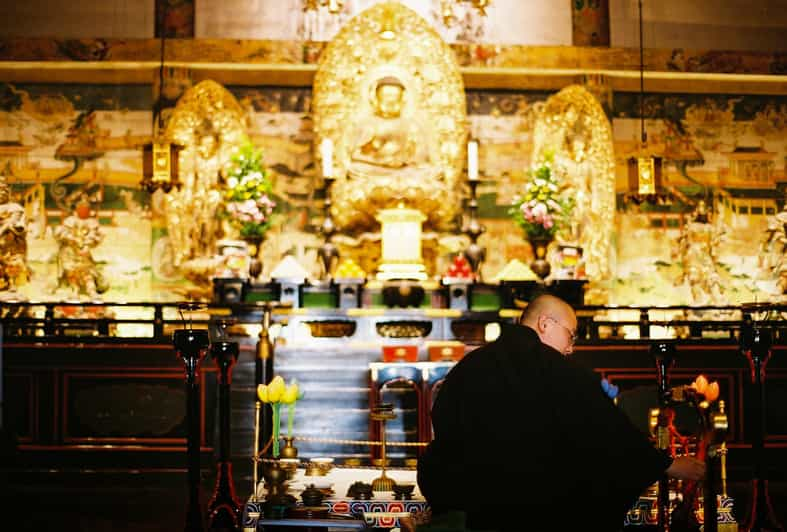
- Discover the golden splendor and rich history of Kinkaku-ji, a 14th-century Shogun’s retirement villa with harmonious architectural styles.
- Immerse in the imperial grandeur of Ninnaji Temple, including an exclusive chanting session and interaction with a resident monk.
- Gain rare access to Ninnaji’s halls for a chanting session, Q&A on Buddhist teachings, and a ritual reenactment led by the resident monk.
- Engage directly with a Ninnaji monk to deepen understanding of Buddhist teachings, temple life, and the significance of rituals.
- Explore Ninnaji’s expansive imperial residence and meticulously maintained gardens, offering a profound connection to Japan’s cultural heritage.
Discovering the Golden Pavilion of Kinkaku-ji
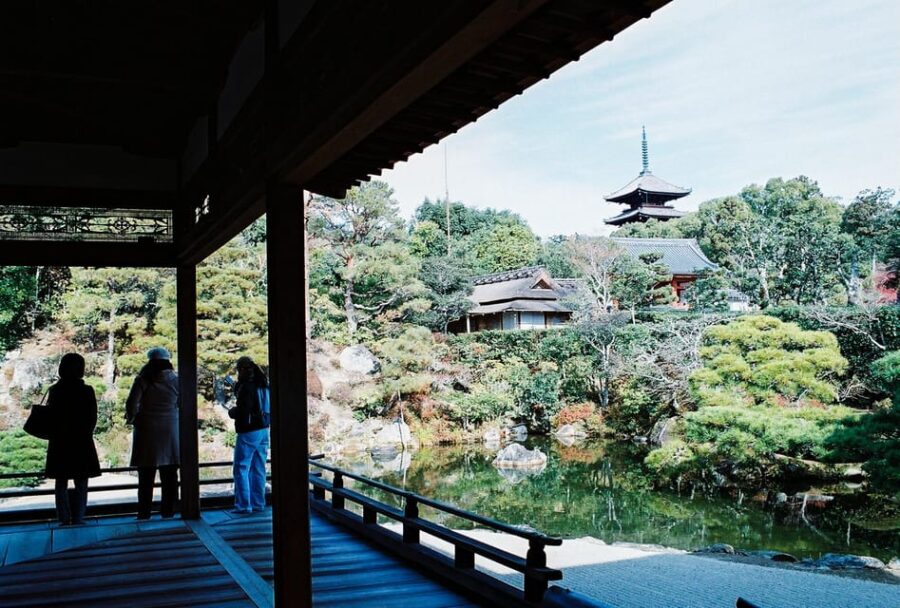
Though its dazzling golden exterior is the main draw, Kinkaku-ji, or the Golden Pavilion, offers visitors a deeper insight into Zen Buddhist philosophy and Japanese culture.
Built in the 14th century as a Shogun’s retirement villa, the pavilion’s three distinct architectural styles – Shinden, Bukke, and Zenshutoku – symbolize the harmony between nature and humanity.
Strolling through the idyllic gardens, travelers gain an appreciation for the temple’s tranquil ambiance and the inherent beauty of simplicity.
With the guide’s expert commentary, guests uncover the rich history and spiritual significance that underpin this iconic Kyoto landmark.
You can also read our reviews of more tours and experiences in Kyoto.
Taking in Ninnaji’s Imperial Grandeur
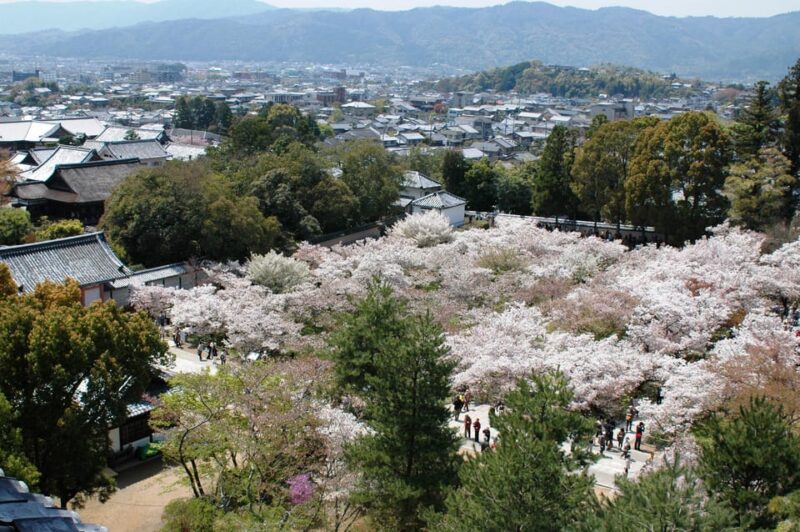
After exploring the lavish opulence of Kinkaku-ji, visitors are transported to the serene grandeur of Ninnaji Temple.
Here, they gain exclusive access to the rarely opened Kondō (Main Hall) for a monk-led chanting session. Participants interact with the monk, asking questions about the temple’s imperial history and religious rituals.
The turning of the Kyōzōs sutra shelf is a mesmerizing sight, symbolizing the temple’s devotion.
Visitors then wander Ninnaji’s tranquil gardens and imperial residence, seeing the elegance and spirituality that defined Japan’s imperial past.
Exclusive Access to Ninnaji’s Rarely Opened Halls
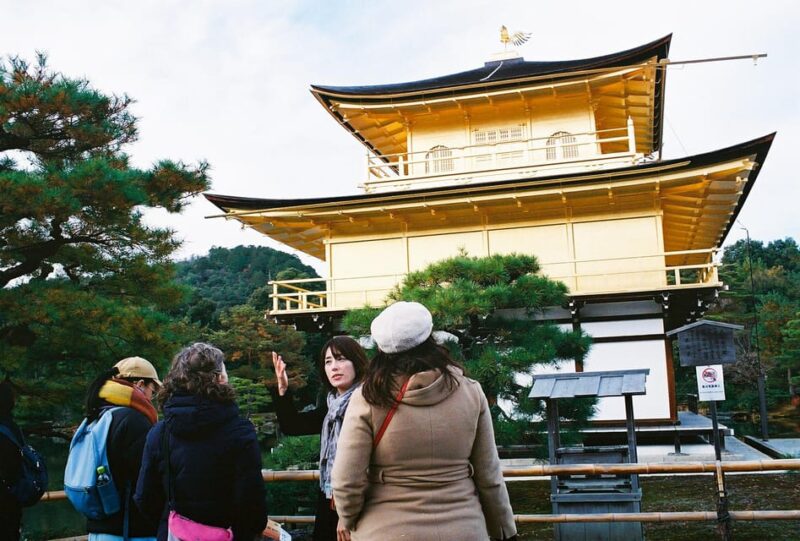
Visitors are granted exclusive access to Ninnaji’s rarely opened Kondō (Main Hall), where they participate in a mesmerizing chanting session led by a resident monk. This profound experience allows guests to connect with the temple’s storied past and feel the weight of its imperial legacy.
| Experience | Highlights |
|---|---|
| Chanting Session | Join the monk in reciting sacred sutras |
| Q&A with Monk | Ask questions about Buddhist teachings and temple history |
| Ritual Reenactment | Witness the turning of the Kyōzō sutra shelf |
| Photo Opportunity | Capture a memorable photo with the monk |
This exclusive access showcases the depth of Ninnaji’s cultural riches and spirituality, leaving a lasting impression on visitors.
Engaging With the Resident Monk
Beyond the exclusive access to Ninnaji’s rarely opened halls, the experience allows visitors to engage directly with a resident monk.
They’ll have the opportunity to participate in a Q&A session, asking questions about Buddhist teachings, temple life, and the significance of Ninnaji’s history and rituals.
The interaction provides a unique chance to learn firsthand from a devotee and gain deeper insights into the spiritual and cultural aspects of the temple.
This personal connection with the monk adds an immersive dimension to the tour, enriching participants’ understanding of Kyoto’s sacred sites.
More Great Thing To Do NearbyThe Ritual of Turning the Kyōzōs Sutra Shelf
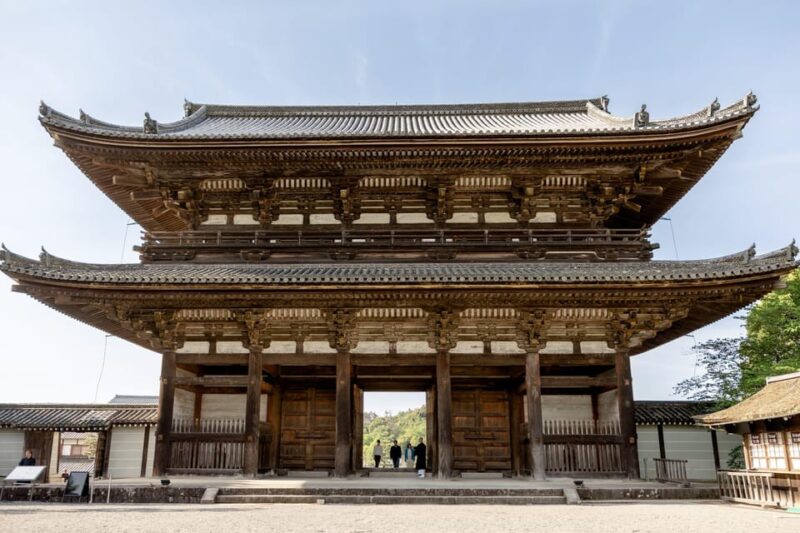
As visitors witness the turning of the Kyōzōs sutra shelf, they’re immersed in a significant ritual that holds deep cultural and spiritual significance within Ninnaji Temple.
This ancient practice involves the ceremonial rotation of the sutra shelves, which contain sacred Buddhist texts. The motion symbolizes the continuous cycle of teachings and the dissemination of wisdom.
Observing the monks’ reverent movements and chanting evokes a sense of reverence and connection to the temple’s long-standing traditions.
The ritual underscores Ninnaji’s role as a center of spiritual practice and offers participants a glimpse into Japan’s rich Buddhist heritage.
Exploring Ninnaji’s Imperial Residence and Gardens
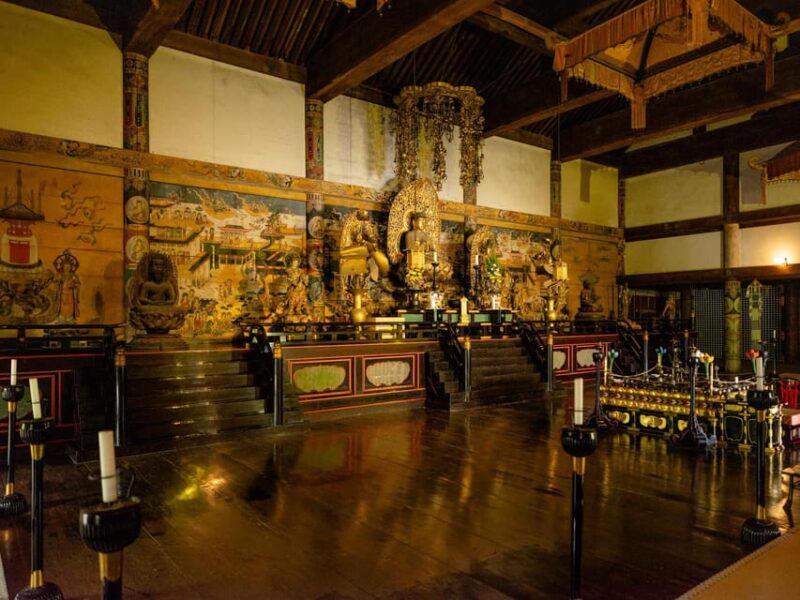
Ninnaji’s expansive Imperial Residence and tranquil gardens captivate visitors with their rich history and serene ambiance.
Guests explore the intricately designed buildings and stroll through the meticulously maintained greenery. The Imperial Residence, once home to the emperor, showcases exquisite architecture and provides a glimpse into Japan’s imperial past.
Visitors can admire the intricate woodcarvings, delicate sliding doors, and elegant furnishings that adorn the residence. The surrounding gardens feature serene ponds, elegant bridges, and lush foliage, creating a calming atmosphere for reflection and contemplation.
This imperial legacy offers a profound cultural experience for all who visit.
Contrasting Architectural Styles and Historical Significance
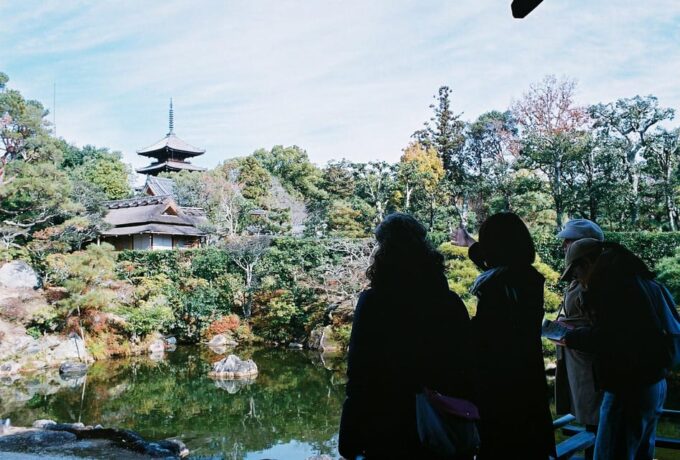
The contrasting architectural styles and historical significance of Kinkaku-ji and Ninnaji Temple offer visitors a profound understanding of the diverse cultural heritage in Kyoto.
Kinkaku-ji, with its lavish golden pavilion, embodies the opulence and prestige of the Ashikaga shogunate. In contrast, Ninnaji’s imperial residence and tranquil gardens reflect the temple’s deep roots in Japan’s imperial lineage.
Key differences include:
- Kinkaku-ji’s ostentatious design versus Ninnaji’s understated elegance.
- Kinkaku-ji’s Buddhist influence versus Ninnaji’s ties to the imperial court.
- Kinkaku-ji’s focus on splendor versus Ninnaji’s emphasis on devotion and ritual.
Essential Information for Your Visit
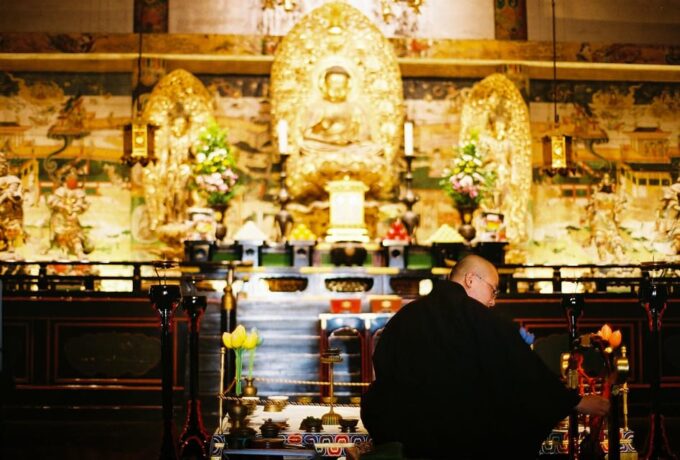
To make the most of your visit, it’s essential to be aware of the key logistics.
This 3-hour small-group tour starts at Kinkaku-ji, the iconic Golden Pavilion. After a photo stop and guided tour, you’ll take a 15-minute taxi ride to Ninnaji Temple.
Here, you’ll access the rarely opened Kondō for a monk-led chanting session and Q&A. Don’t miss the ritual turning of the Kyōzōs sutra shelf.
The tour concludes at Ninnaji, where you can explore the imperial residence and tranquil gardens.
Wear comfortable shoes and bring a camera. This experience isn’t suitable for wheelchair users or baby strollers.
Frequently Asked Questions
Is the Tour Suitable for Those With Physical Disabilities?
The tour is not suitable for wheelchair users or those with baby strollers, as the itinerary involves walking and accessing areas that may not be fully accessible. Participants should have good mobility to fully enjoy the experience.
Can We Bring Our Own Food and Drinks on the Tour?
No, the tour doesn’t allow participants to bring their own food and drinks. The tour includes access to the temples and guided experiences, but doesn’t provide any food or beverage options. Participants should plan to purchase any refreshments separately.
Do We Need to Pay Additional Fees for the Chanting Session?
No, the chanting session at Ninnaji Temple is included in the tour price. The tour provides exclusive access to the rarely opened Golden Hall and Sutra Hall, as well as the monk-led chanting session, at no additional cost.
Can We Extend the Tour to Visit Other Temples in Kyoto?
The tour package doesn’t include visiting additional temples in Kyoto. However, travelers can explore other temples on their own before or after the guided tour of Kinkaku-ji and Ninnaji Temple. Additional costs may apply for visiting other sites.
How Do We Get to the Meeting Point at Kinkaku-Ji Temple?
To get to the meeting point at Kinkaku-ji Temple, guests can take a taxi, bus, or subway to the temple’s entrance. The tour guide will be waiting there to welcome the group and begin the experience.
The Sum Up
Kyoto’s Kinkaku-ji and Ninnaji Temple offer a captivating blend of cultural heritage, spiritual tranquility, and exclusive insights. From the golden splendor of Kinkaku-ji to the imperial grandeur of Ninnaji, visitors can enjoy Japan’s profound history and traditions. The opportunity to engage with a resident monk and explore sacred spaces further enriches this profound journey, illuminating the deep beauty and spirituality that define Kyoto’s timeless allure.
You can check if your dates are available here:More Tour Reviews in Kyoto
- The Art of Geisha: Exclusive Show & Traditional Japanese Game
- Tea Ceremony With Kimono and Professional Photoshoot in Kyoto
- Kyoto Arashiyama Bamboo Forest Hidden Hiking Tour
- Kyoto Early Morning Walking Tour: Nature & History
- Small-Group Dinner Experience in Kyoto With Maiko and Geisha
- Private Kyoto Night Tour: Historic Walk at Gion and Fushimi
Not for you? Here's more things to do in Kyoto we have recnetly reviewed
- 5 Best Cruises And Boat Tours In Kyoto
- 14 Best Dining Experiences In Kyoto
- 20 Best Full-Day Tours In Kyoto
- 5 Best 2 Day Tours In Kyoto
- 2 Best 4 Day Tours In Kyoto
- 20 Best Photography Experiences In Kyoto
- 13 Best Dinner Tours In Kyoto
- 25 Best Food Tours In Kyoto
- 14 Best Lunch Experiences In Kyoto
- Kyoto Bus Tour: Iconic KInkakuji, Ginkakuji, Kiyomizu Temple (AW)
- Kyoto Bus Tour: Arashiyama, Kinkaku-ji Review
- Gyoza Cooking Class in Kyoto: Traditional Japanese Dumplings
